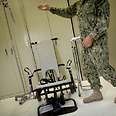
Inside Guantanamo Bay: Restraint chairs, feeding tubes
Photos from US detention facility in Cuba show infamous 'restraint chair', tubes inserting food by force to prisoners on hunger strike. Detainees claim 'enormous pain', US military says they 'preserve life'
The pictures were taken by the Getty agency after it was granted a request to visit the base. Its photographer was not allowed to see any patients.
Related Stories:
- UN rights chief says anti-terror measures can backfire
- 9/11 suspects defiant at Guantanamo arraignment
- Amazing pictures from Iran published
According to The Daily Mail, The US military is still using the chair to cope with a hunger strike by 104 of the 166 prisoners which has lasted more than three months.
Each day, up to 40 of them are strapped down and kept alive with a liquid nutrient mix fed through a nasal tube. Medical experts have described the practice as unethical and dangerous, and even Barack Obama has condemned it, saying in his national security address: "Is this who we are? Is this something that our Founders foresaw?"
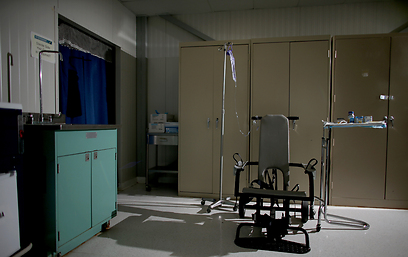
'Restraint chair' (Photo: Gettyimages)
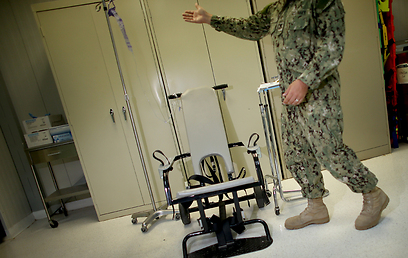
(Photo: Gettyimages)
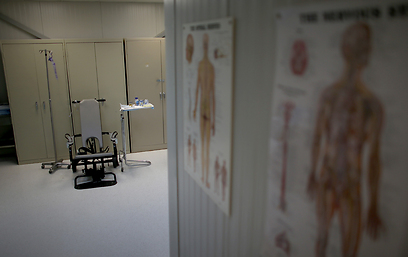
(Photo: Gettyimages)
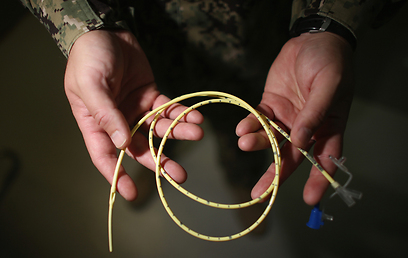
Feeding tube, inserted through nose down to stomach (Photo: Gettyimages)
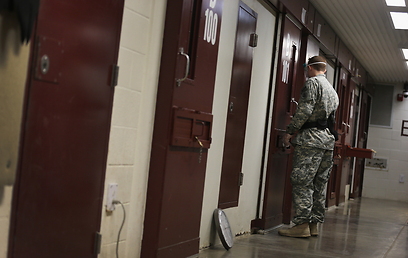
Morning check-up at Guantanamo Bay (Photo: Gettyimages)
But officials insist the feeding is considered safe and its use has been upheld by the courts. Under the procedure, an inmate who refuses nine successive meals or whose body weight drops significantly is offered a twice-daily can of a nutritional supplement, whose flavors include butter pecan. If he refuses, guards shackle him into the chair by his arms, head and feet, and a nurse inserts the tube up his nose, down the back of his throat and into his stomach, according to The Mail.
Happy or sad?
Most prisoners are taken to designated "feeding cells" but few are fed at the Cuban base's detainee hospital, where the photographs were taken. The Daily Mail revealed that they are asked to point to one of six happy or sad faces on a card to indicate their discomfort level.
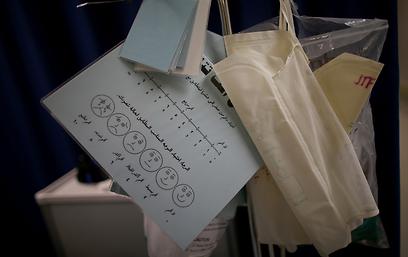
The happy/sad questionnaire (Photo: Gettyimages)

Prison's hospital, where inmates are fed (Photo: Gettyimages)
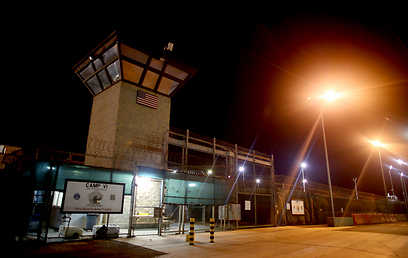
(Photo: Gettyimages)
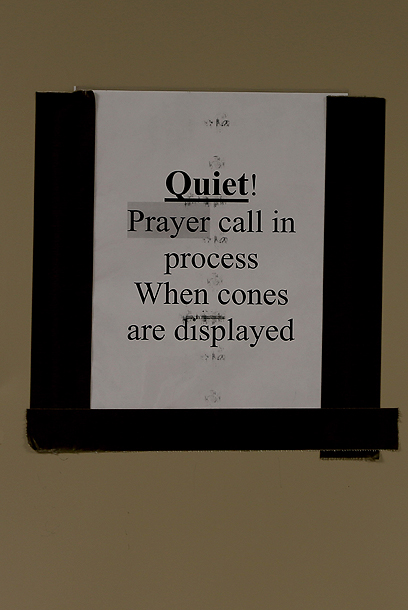
(Photo: Gettyimages)
Samir Naji al Hasan Moqbel, a Yemeni who has been on hunger strike since February after 11 years at Guantanamo, recently described how he wanted to vomit when the feeding tube was first stuck up his nose: "There was agony in my chest, throat and stomach." Ahmed Zuhair, a 47-year-old former inmate, recently described how four years of being regularly strapped to what he dubbed the "torture chair" had damaged his back and nasal passages.
According to The Daily Mail, a US military spokesman said the feeding tubes are lubricated and prisoners are offered anesthetic to prevent long-lasting damage: "We think there are adequate safeguards in place to make it as pain-free and comfortable as possible. It's not done to inflict pain and it's not done as punishment. It's done to preserve life."
- Receive Ynetnews updates directly to your desktop










